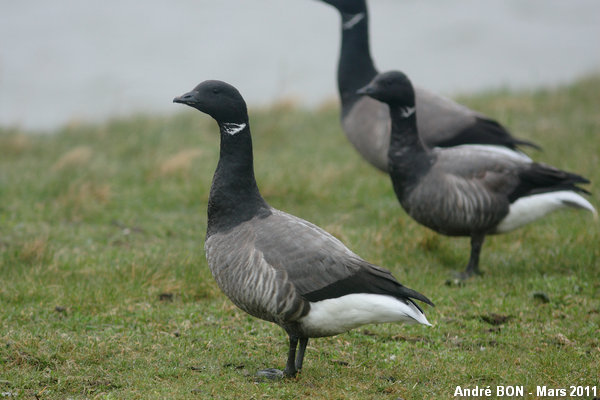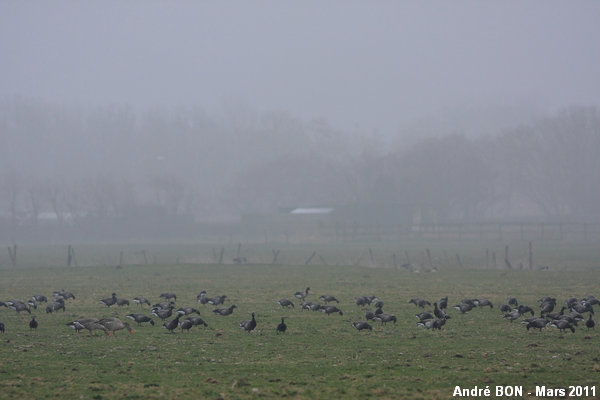

| Brant Goose (Branta bernicla (Linnaeus, 1758)) |


|
|
Scientific name: Branta bernicla (Linnaeus, 1758) Common name: Brant Goose Other names: Brent Goose French name: Bernache cravant Order: Anseriformes Family: Anatidae Size: Body size: 56 to 61 cm; Weight: 1100 to 1700 g; Wingspan: 110 to 120 cm. Habitat: Arctic tundra around the north pole in summer, with a preference for coasts and lake banks. Food: The Brant Goose is vegetarian and mainly feeds on sea weeds and other water plants. It also feeds on moss, lichens, grasses and cereals. Nesting: Brant Geese nest alone or in colonies. The nest is built on the ground. Females lay from 3 to 5 eggs in June. Migration: Populations move southwards in winter and gather on the north Atlantic coasts and on the north Pacific coasts. The flocks do not form large V shapes in flight but rather disorganised lines. Geographic area: Europe, North America, Asia. |
The Brant Goose is a small sized black goose. It shows a small white patch on each side of the neck. The upper side of the body is dark brown with thin pale feather edgings. The under side of the tail is white. You can distinguish three subspecies which mainly differ by the colour of the body sides. The Dark-bellied Brant Goose (Branta bernicla bernicla) is observed in Siberia and in Europe. The Pale-bellied Brant Goose (Branta bernicla hrota) is found north of Canada, in Greenland and Spitsbergen. The Pacific Brant Goose (Branta bernicla nigricans), with a black belly and a large white collar, is found at the north-eastern tip of Siberia and in the centre of Canada. |
| [To know more about the Brant Goose] [Next picture] [Top] |

|
I think that these Brant Gooses observed on the Texel island are members of the dark-bellied subspecies (Branta bernicla bernicla). |
| [To know more about the Brant Goose] [Previous picture] [Top] |

|
Late March this year, most of the Brant Geese must have already moved northwards. Large flocks gathered here in winter must be very impressive to observe. |